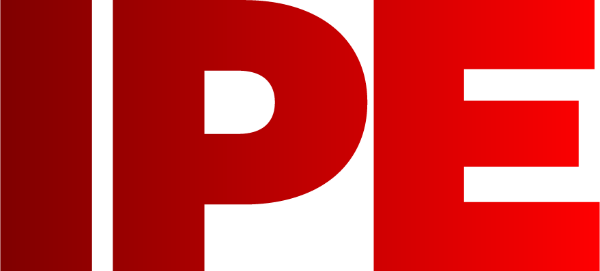

|
Edward Lowton
Editor |


|
| Home> | Health, Safety & Welfare | >Safety Management | >The role of RAMS in workplace health and safety |
The role of RAMS in workplace health and safety
22 March 2023
When it comes to managing workplace health and safety, method statements are an important planning tool. However, there are several points to consider to help ensure your method statements are effective, explains Alex Minett

THE ROLE of risk assessments in identifying and managing harm or ill-health within work activities is well understood, but it is easy to overlook the importance of method statements within this process.
A method statement extends the risk assessment to allow site, client or task-specific detail to be added into your safe way of working (known as a safe system of work). Done well, method statements are a planning tool to manage safety throughout a job right from the start.
For any business that employs five or more people, written risk assessments are a legal requirement. Although method statements aren’t a legal requirement, the HSE suggests they are an effective and practical way to help plan, manage and monitor work, and they are becoming a standard expectation in many high-risk workplaces.
Today, it is not unusual for method statements to be requested at the tender stage of a contract. When work is then awarded, there is an expectation for risk assessments and method statements to be shared before work starts to demonstrate further due diligence.
Where high-risk activities are concerned (such as demolition and structural works), method statements also offer an opportunity to develop logical and robust working methods, with an aim to reduce the chances for serious incidents to occur.
Why do we need RAMS?
Latest Labour Force Survey figures show that 441,000 people sustained an injury at work in 2020/21. Added to this, 142 employees lost their lives at work. However, a look at HSE prosecutions suggests that many accidents were preventable had correct assessment, planning and control measures been put in place and communicated.
In July 2021, a manufacturer was fined after being found in breach of section two of the Health and Safety at Work etc. Act 1974 after an employee had three fingers permanently severed while cleaning and attempting to remove a blockage from a piece of machinery. The HSE found that although the cleaning of the equipment was a daily process, the company had failed to identify and eliminate the dangers involved in accessing some of the moving parts of the machinery. In addition, no risk assessments had been undertaken, control measures put in place, and detailed communication provided to workers who used it.
The investigating HSE inspector commented, "this incident could so easily have been avoided. Employers should ensure they carry out an assessment of the risks and put in a safe system of works for the operation of all machinery, including tasks such as cleaning. Employers should also ensure that adequate information, instruction and training is provided to all who use it."
Creating high-quality RAMS
Method statements clearly have an important role to play in managing workplace health and safety but they can be difficult to get right. In fact, creating appropriate method statements is one of the biggest barriers to contractors successfully completing the CHAS health and safety assessment process.
While are no hard and fast rules for what to include and exclude from method statements, there are some common mistakes to avoid. These include:
- Repurposing old method statements. Method statements that include details of previous jobs show a lack of care and attention. If using a generic method statement template, make sure, at the very least, to review it for each task.
- Neglecting to include project-specific detail. This is one of the most common reasons for method statements to be rejected. Hazards, site specification, location, teams, equipment and circumstances can all change from project to project and method statements should reflect this.
- Failing to specify everyone who is at risk. Method statements should detail everyone who is at risk from a work activity. For example, if work is taking place near a public walkway, members of the public may be at risk in addition to site personnel.
- Forgetting to review your method statements regularly. Some details of method statements are subject to change, for example control measures may need to be adapted because of varying weather conditions.
- Referencing out-of-date legislation. If referencing rules and regulations, method statements should cite the latest versions. For example, the PPE Regulations, which are often referenced in method statements, are being updated on 6th April 2022. Keep up-to-date with latest health & safety rules at HSE (https://www.hse.gov.uk/index.htm).
Top tips for creating effective method statements
- Ensure method statements are bespoke and relevant to the task at hand.
- Use plain and concise language to reduce misunderstanding and steer clear of jargon and abbreviations.
- Consider using supporting images and diagrams as these can be helpful for project teams to follow.
- Use consistent branding and company logos on your paperwork to help portray an expert and trusted document.
Promoting high health and safety standards throughout your supply chain
Whether you are a contractor who wants to demonstrate your commitment to high levels of health & safety, including producing high quality method statements, or you are a business looking for responsible contractors, CHAS can help. As well as being compliant with latest health and safety standards, CHAS contractors now have access to CHAS RAMS which enables them to produce high quality, simple to use customisable method statements.
Meanwhile, businesses looking for compliant contractors can sign up as a CHAS Client completely free of charge which gives them access to the CHAS Jobs Board where they can find contractors accredited to the latest prequalification standards. CHAS Client's also benefit from a suite of complimentary supply chain management and procurement tools.
Alex Minett is head of products and markets at CHAS
For more information:
Tel: 0345 521 9111
- CHAS launches workforce ID verification solution
- New head of risk at CHAS
- Seven tips for hearing protection
- CHAS makes it easy to find COVID-19 secure contractors
- Industry shows support for new Common Assessment Standard
- New verification service for materials suppliers
- Andrew Turner joins CHAS as business development manager
- CHAS appoints quality and compliance manager
- Safety body hits quarter century
- Cloud RAMS for CHAS contractors




















